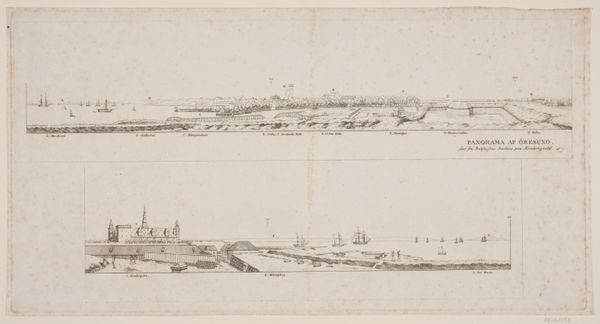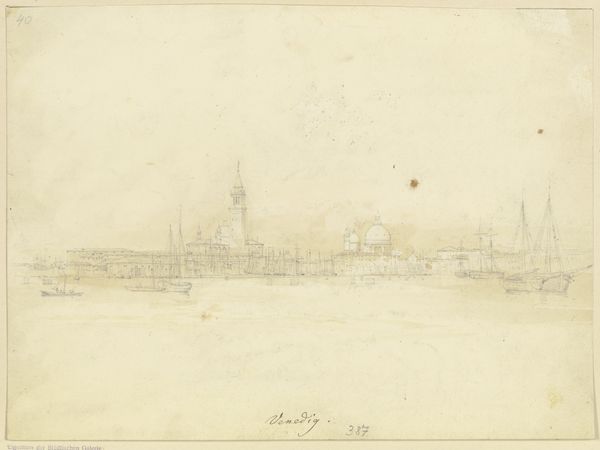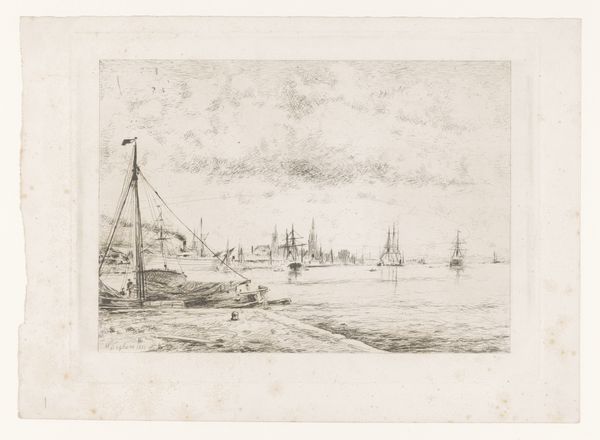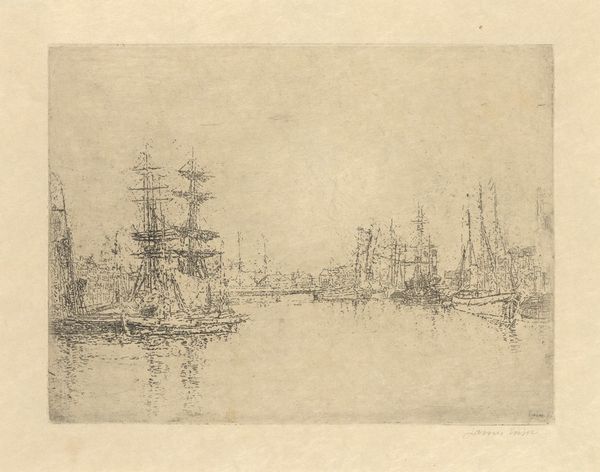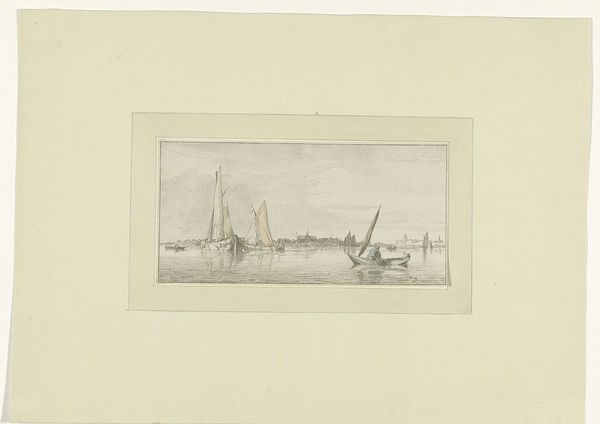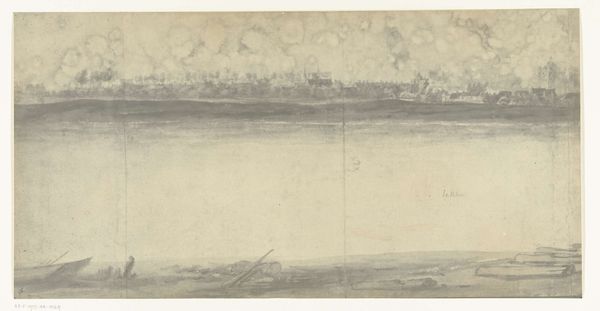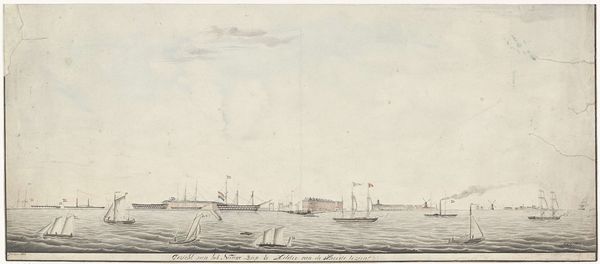
drawing, ink
#
drawing
#
dutch-golden-age
#
landscape
#
ink
Dimensions: height 132 mm, width 231 mm
Copyright: Rijks Museum: Open Domain
Editor: Here we have Rembrandt van Rijn's "View of the Amstel from the Blauwbrug," an ink drawing dating from about 1645 to 1650. It’s a beautifully delicate landscape, almost ghostly in its soft washes. What draws your attention when you look at this work? Curator: It’s more than just a picturesque scene. I am fascinated by how Rembrandt situates this view of the Amstel within the burgeoning mercantile and colonial context of 17th-century Amsterdam. It prompts us to think about the lives connected to these waterways and ports, right? Editor: Absolutely. I hadn't considered the socioeconomic implications. The scene is quiet; how do you connect it to this larger history? Curator: Notice the ships docked along the Amstel. These were not just vessels of trade but vehicles of exploitation, traveling to the East and West Indies. Amsterdam’s Golden Age was financed on the backs of the enslaved and the exploited. Does that change how you read the stillness of the scene? Editor: It certainly does. It casts a shadow. Are you suggesting that Rembrandt was making a direct comment on colonialism? Curator: Perhaps not direct, but undeniably, the scene is complicit. Artists like Rembrandt were also part of that economy, often patronized by merchants who profited from these exploitative systems. Consider then, how his seemingly serene landscapes may also unwittingly portray these realities. Editor: I never thought about it that way. This connection reframes the art, forcing a dialogue about difficult truths. Curator: Exactly. We must interrogate these visuals beyond aesthetics, viewing them through the lenses of historical injustices and social power dynamics. It urges us to confront art’s entanglement within broader systems of oppression. Editor: It’s given me so much to think about regarding how we view historical art. Curator: Me too. It's in examining these complexities that art becomes not just a thing of beauty but a powerful catalyst for critical self-reflection and change.
Comments
rijksmuseum about 2 years ago
⋮
Rembrandt ventured not far from his house on the Jodenbreestraat and stood on the middle of the Blauwbrug (Blue Bridge). Facing south, he drew the expansive view of the River Amstel with great economy, while nevertheless conveying a profound sense of space and atmosphere. On the left bank is the yacht harbour, and on the right the tollhouse, where the overseer of the palisades marking the edge of town lived.
Join the conversation
Join millions of artists and users on Artera today and experience the ultimate creative platform.

